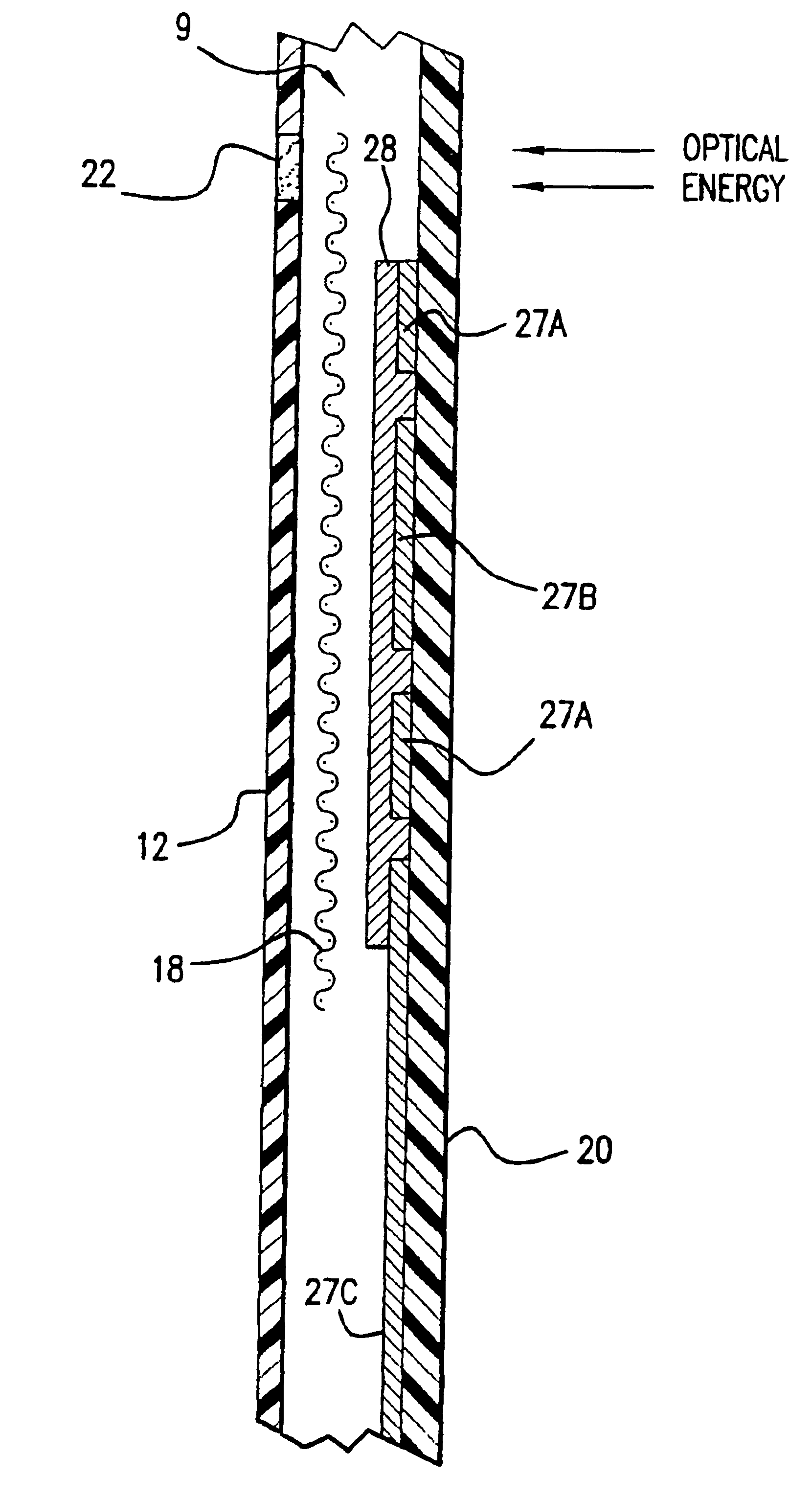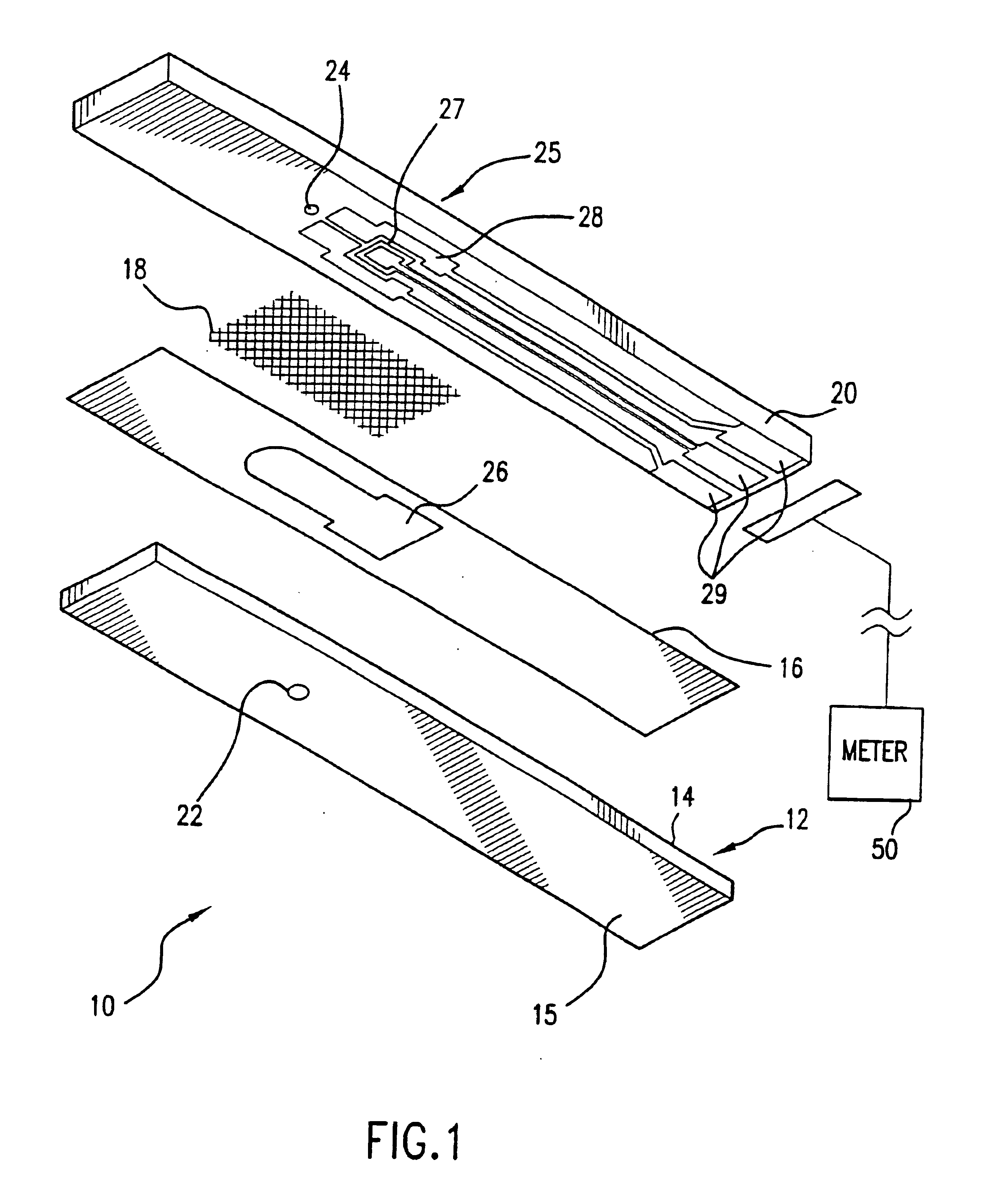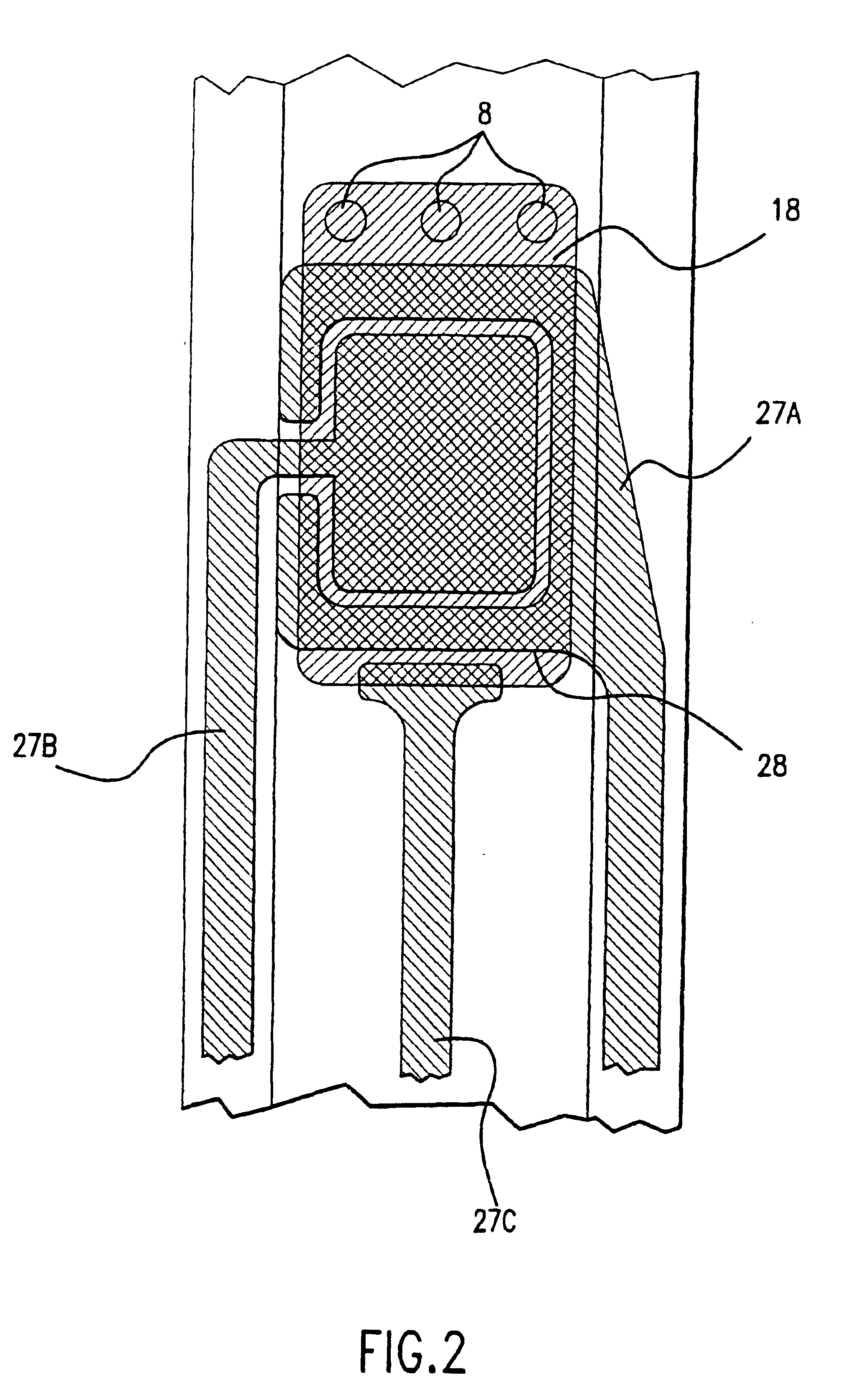Integrated poration, harvesting and analysis device, and method therefor
- Summary
- Abstract
- Description
- Claims
- Application Information
AI Technical Summary
Benefits of technology
Problems solved by technology
Method used
Image
Examples
example 2
[0096]Carbon black (<1μm) was suspended into an acrylic-based ink, such as clear nail polish, to provide a suspension having a concentration of 10 g / l. The suspension was then cast, or printed, onto a polyester substrate (0.050 mm thick). The suspension was cured. The resulting coated substrate was then applied topically to the skin either directly, as a film, or, indirectly, as part of a device. Light from a laser or from a polychromatic light source was focused onto the film and interface between the colorant and the skin for the photothermal treatment. Following the photothermal treatment, the film was removed and discarded.
example 3
[0097]Carbon black (<1 μm) was blended into polyester to provide a blend having a final concentration of 10 g / l. The blend was commercially available under the trade designation “MELINEX 427 / 200.” The blend was melted, and the melted blend was then extruded to form a film (0.050 mm thick). The film was then cured. The resulting film was then applied topically to the skin, either directly as a film or indirectly as part of a device. Light from a laser or from a polychromatic light source was focused onto the film and interface between the colorant and the skin for the photothermal treatment. Following the photothermal treatment, the film was removed and discarded.
example 4
[0098]Titanium metal was sputter-coated onto a polycarbonate film substrate. The substrate has a thickness of 2 mil (0.05 mm). The thickness of the titanium / titanium oxide layer was approximately 50 nm. The film was placed onto the skin, the metal layer being in contact with the skin. The film was maintained in proper position by an adhesive ring, which surrounded the targeted area. Light from a laser or from a polychromatic light source was focused onto the film and interface between the colorant and the skill for the photothermal treatment. Following the photothermal treatment, the film was removed and discarded.
[0099]The metal layer can be coated with a thin layer of polymeric material, such as 0.25 mil (0.006 mm) of polyoxymethylmethacrylate, as a protective layer.
PUM
 Login to View More
Login to View More Abstract
Description
Claims
Application Information
 Login to View More
Login to View More - R&D
- Intellectual Property
- Life Sciences
- Materials
- Tech Scout
- Unparalleled Data Quality
- Higher Quality Content
- 60% Fewer Hallucinations
Browse by: Latest US Patents, China's latest patents, Technical Efficacy Thesaurus, Application Domain, Technology Topic, Popular Technical Reports.
© 2025 PatSnap. All rights reserved.Legal|Privacy policy|Modern Slavery Act Transparency Statement|Sitemap|About US| Contact US: help@patsnap.com



